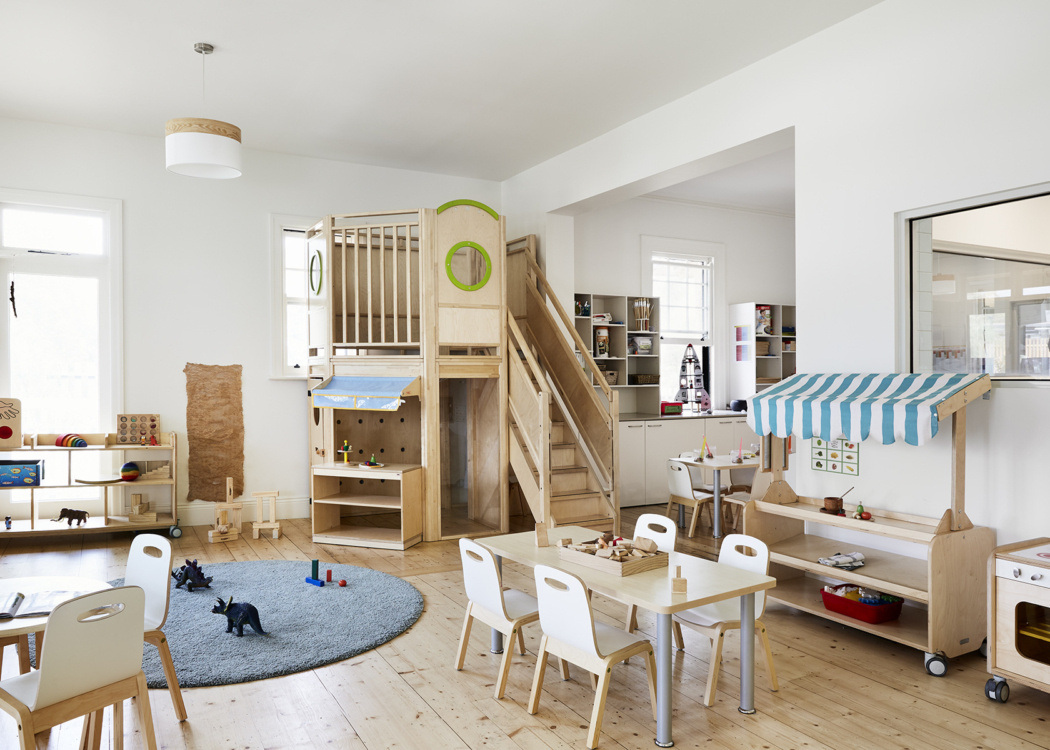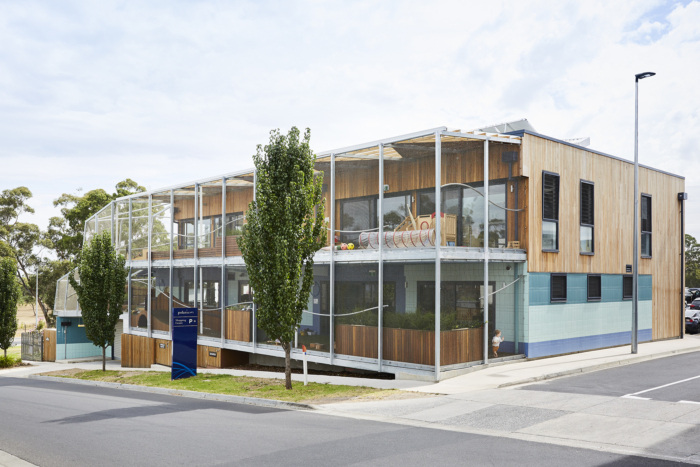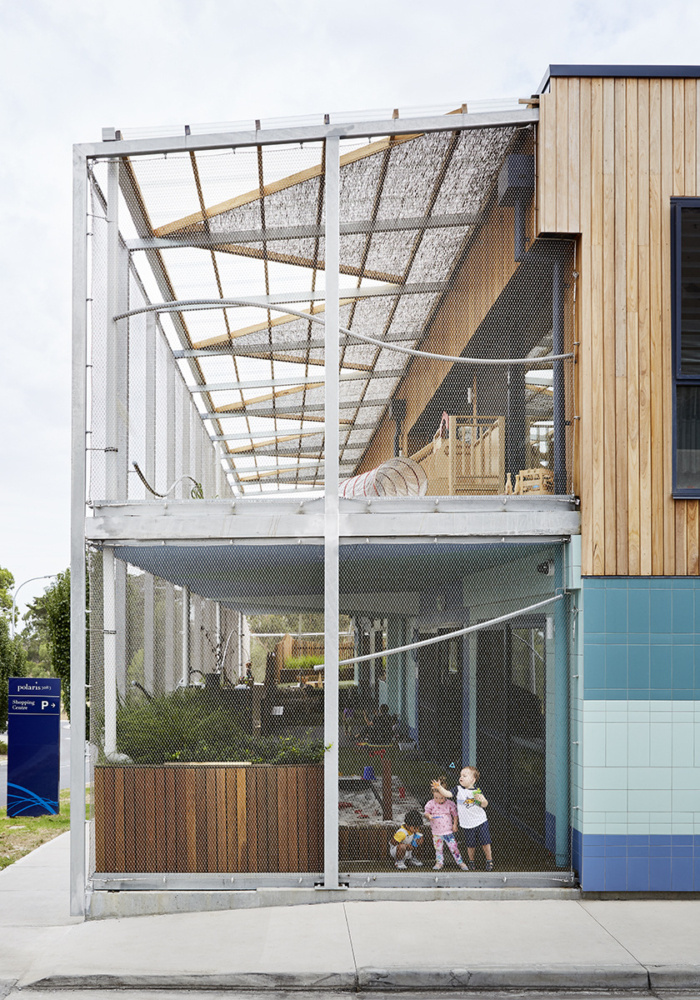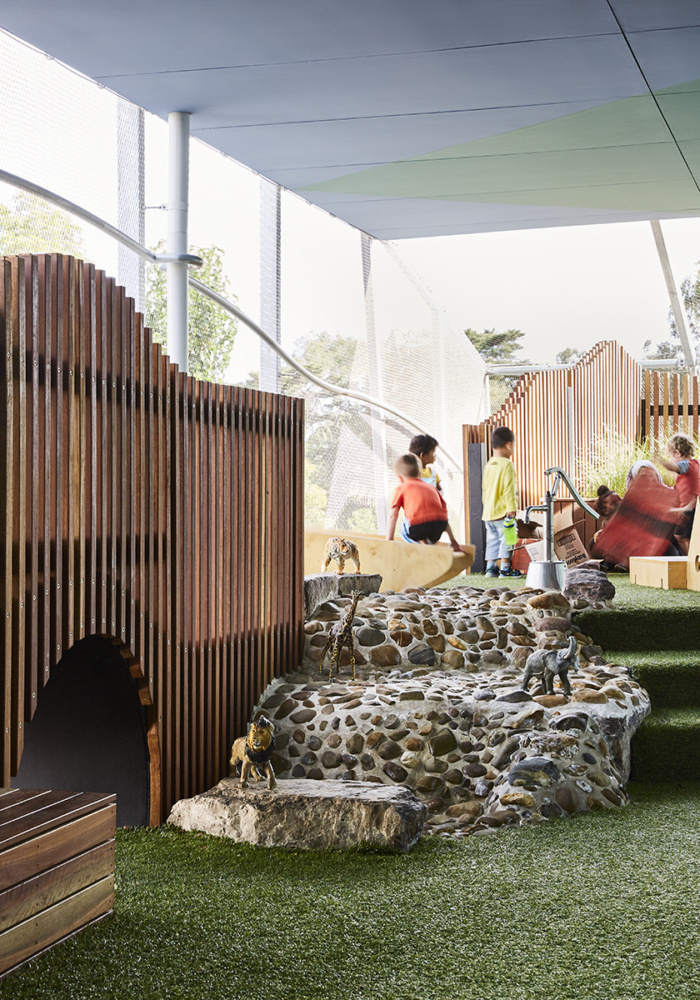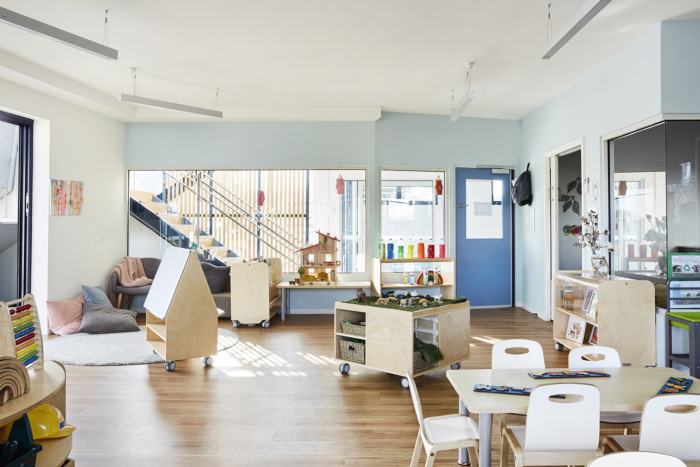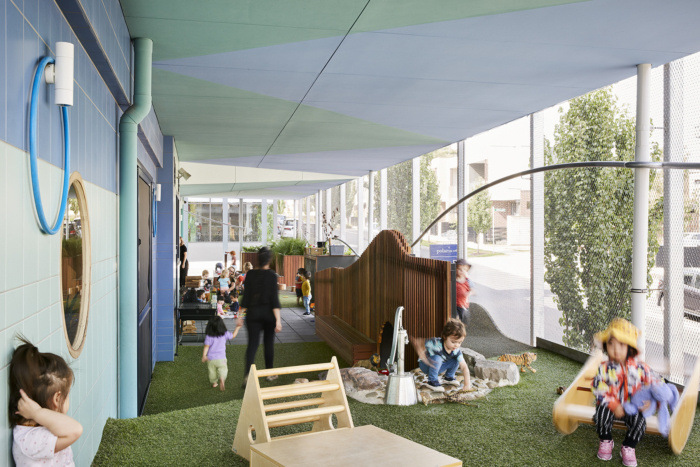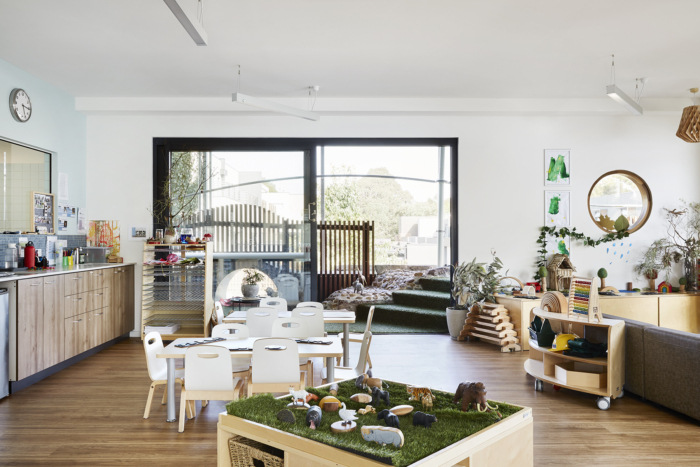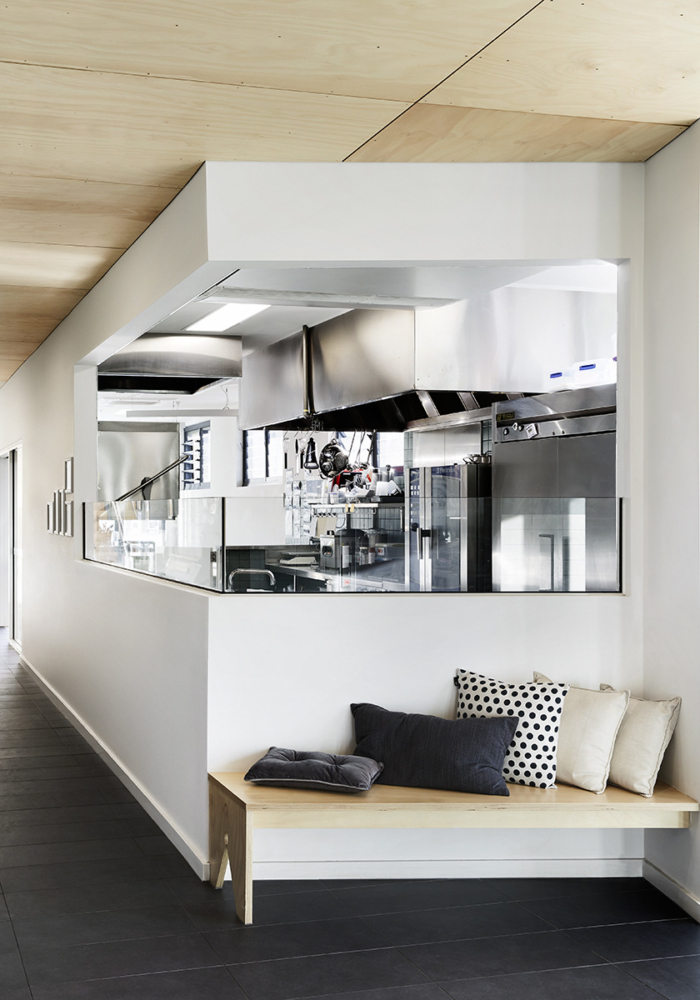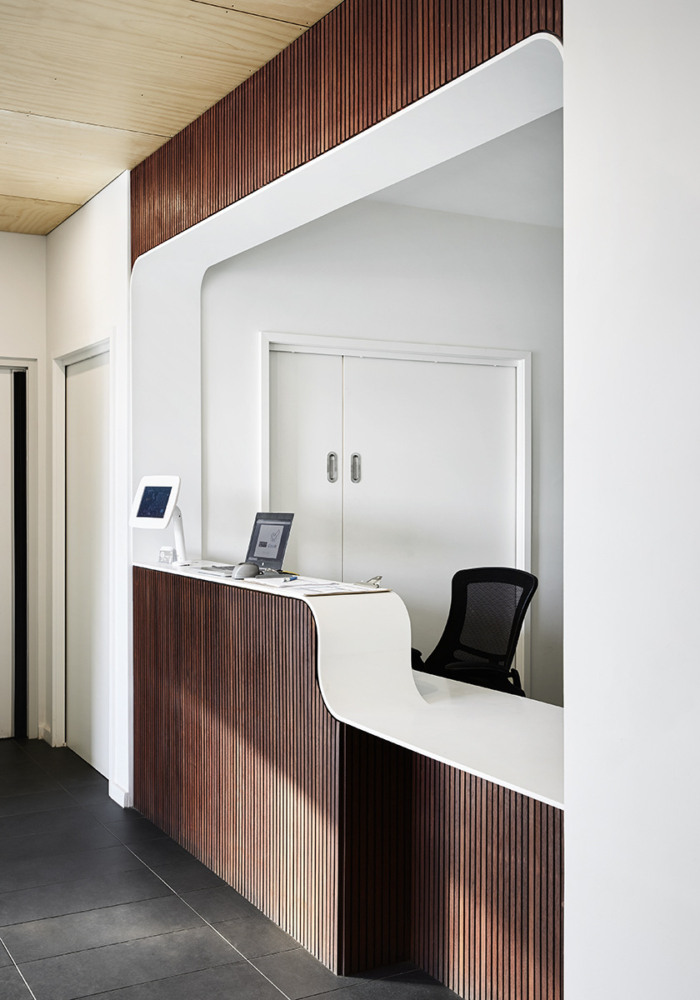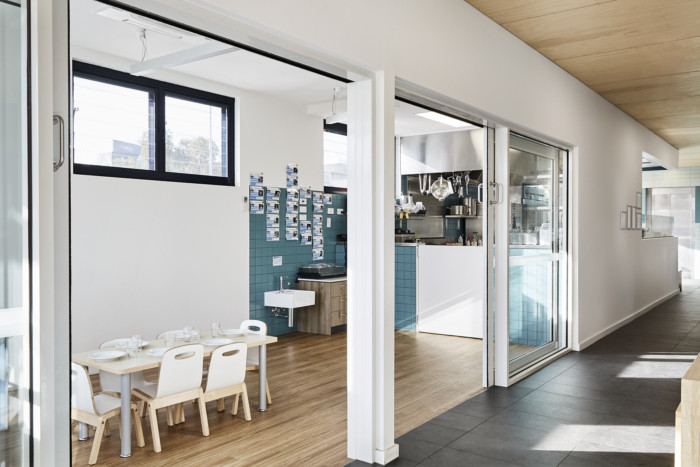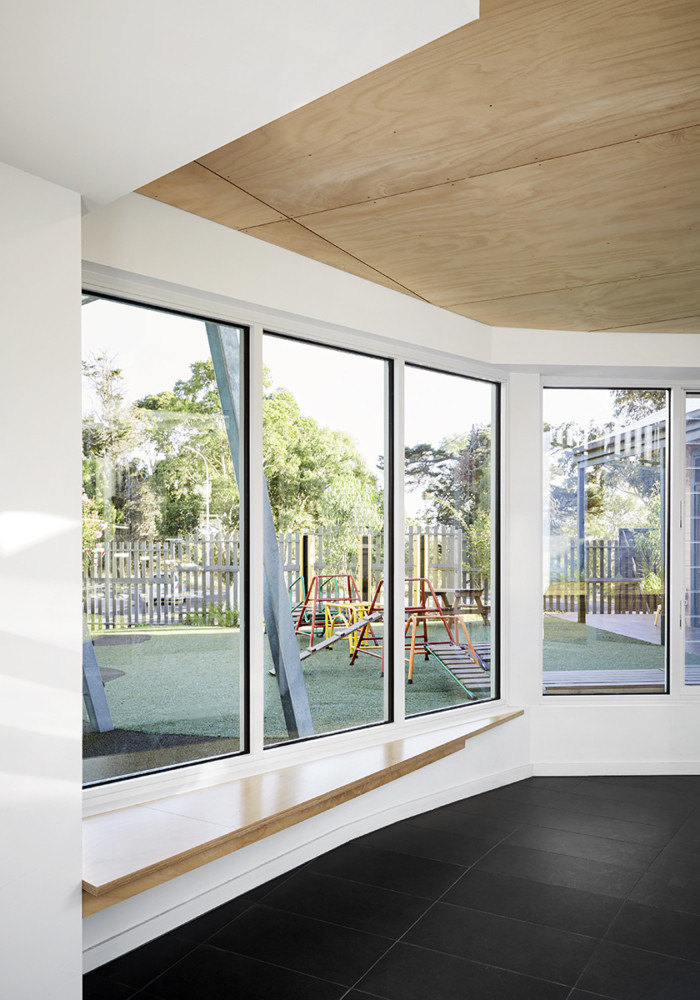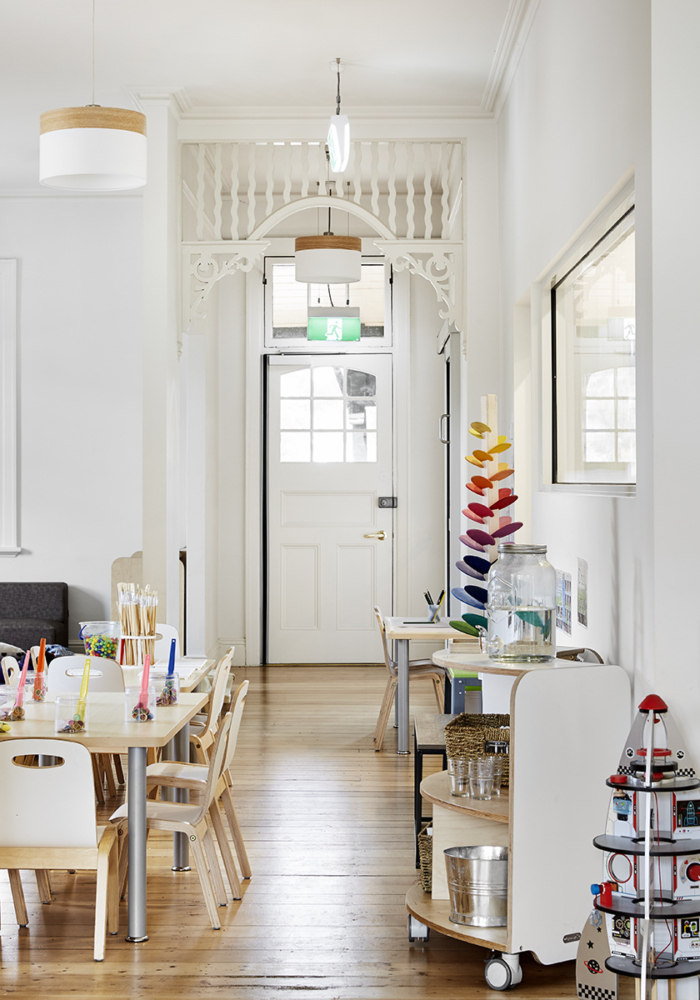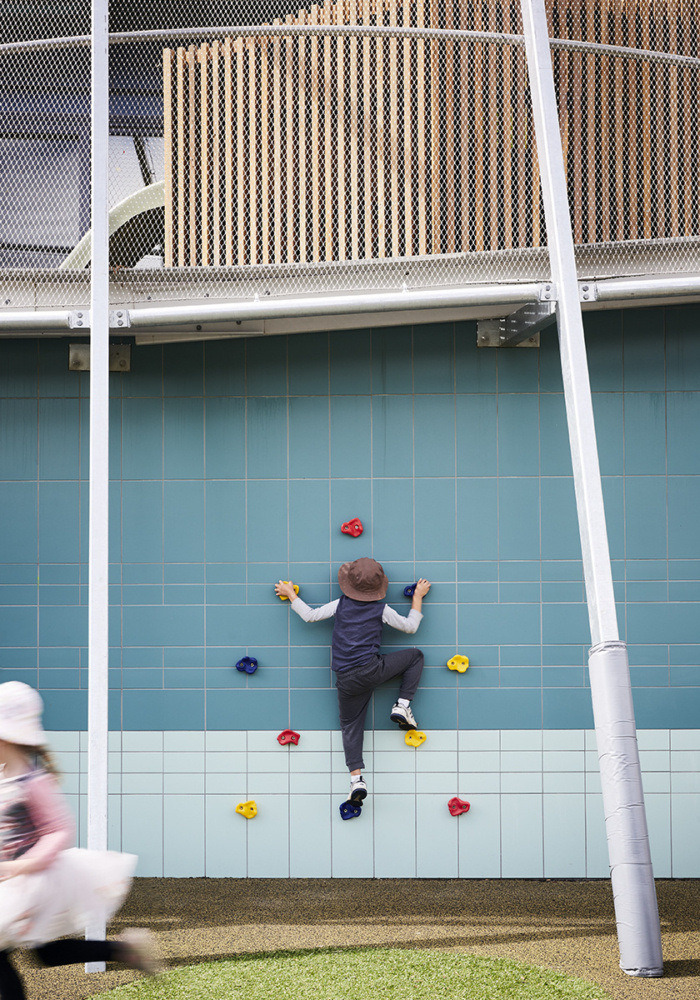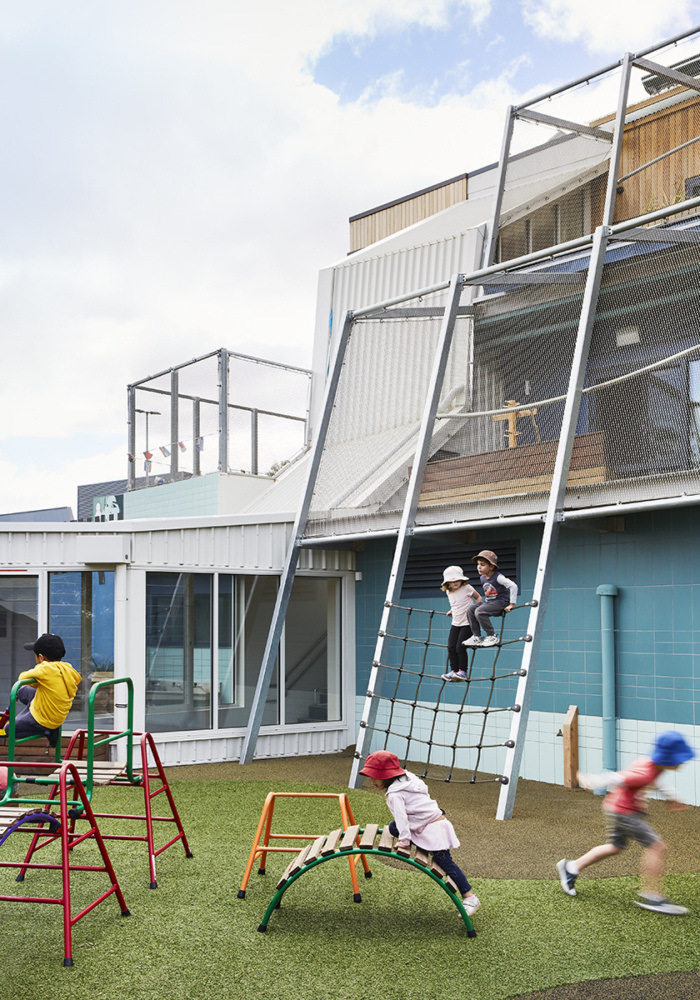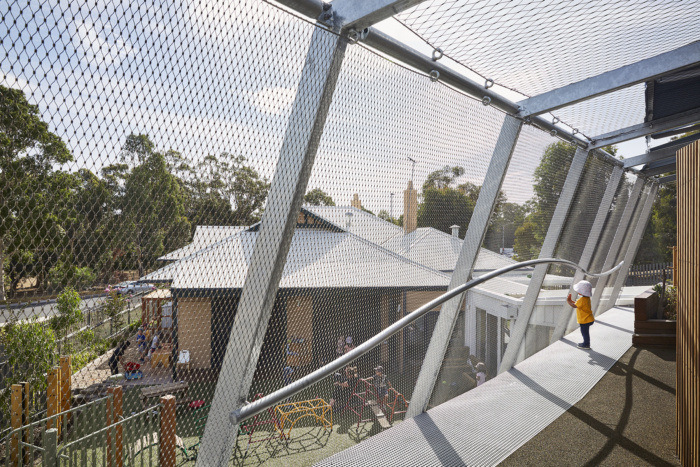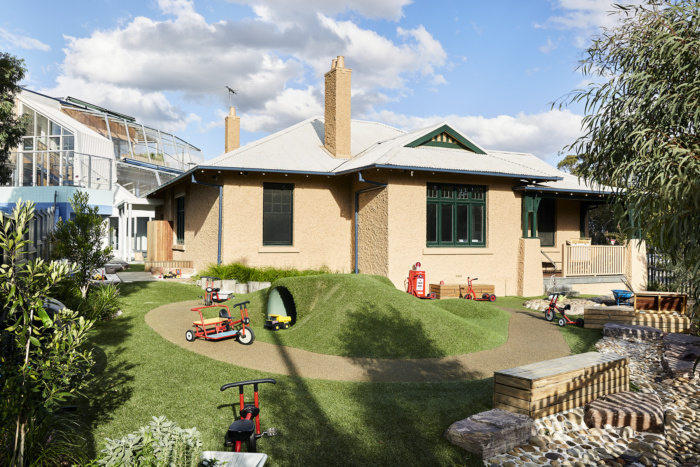Bundoora Childcare Centre
Gardiner Architects completed a bright and thoughtful space for Bundoora Childcare Centre in Melbourne, Australia.
There’s a strong demand for childcare in Melbourne though the industry can often be more difficult than it first seems. Developers are often tackling difficult sites where residential developments don’t stack up, by opting to build a childcare centre instead. This often means childcare centers are located on difficult sites with a plethora of design constraints that need to be responded to in order to ensure that the facility will foster a safe, enjoyable environment for children to learn in.
Located on a challenging, steep site, the Bundoora Childcare Centre is a typical development in this sense. The centre is within a larger urban development precinct that saw an increase in the assessed demand for childcare in the area. The steep site meant that the development had to be split over two levels. In the lower section of the property, there’s a heritage cottage surrounded by ground level outdoor play space. The new two story building is located in the higher section of the site. One of the essential design issues faced at the beginning of the design process was finding the most effective way to refurbish the heritage cottage with minimal intervention to allow it to be re-purposed into an interesting child care space. The priority was to have the cottage relate to the outside while also linking to the new, more program intense new building.
For this childcare project, we were engaged by the developer who is a large property trust that specializes in childcare. We also worked closely with the operator to ensure the centre was aligned with their specific facility requirements. The architectural proposal and resulting building cost had to reflect the long-term rental agreement that the developer and operator had established. This can often prove challenging, especially on difficult sites. Architectural skill is paramount to find ways to maximize the number of children that can be accommodated, make the building as efficient and therefore as cheap as possible, while also ensuring that it’s the best design outcome for the children who are going to be attending the centre.
The number of children that the development deal was based on, meant that a design issue arose around how to provide adequately sized, integrated and varied outdoor environments. Elevated outdoor play spaces were identified as a necessity though we wanted to ensure that these spaces moved away from the feel of verandahs hemmed in by high glass balustrades. A strong characteristic of the design became the tensioned mesh that runs right around the elevated outdoor areas. The design is first and foremost about the children and mesh is a more tactile, interesting and engaging surface. It also allows the children to be safe while prioritizing more connection to the elements and surrounding views. It was important to provide spaces that were adaptable, so they can be changed to house a range of different activities while also responding to the variation in seasonal and day to day weather conditions. The mesh creates a blending of playground and building. It becomes a moving and changing facet of the building experienced not only from within but from beyond. The mesh also allows for interaction between the raised outdoor spaces and the ground level outdoor space surrounding the cottage.
We prioritized making the internal spaces flexible rather than too contrived or rectilinear. This allowed the operator and their staff to change the internal environment to suit different play activities expanding the possibilities of how the one room can be utilized and in turn extending the lifespan of the built space.
The palette of the project prioritized longevity and flexibility. We used color in a restrained way, most often utilizing color to act as visual identifiers. The doors to activity rooms are painted a deep blue while strong toned tiles distinguish the kitchen as well as the children’s bathrooms. The rest of the color can be infused into the spaces through the play equipment and art made by the children.
We feel that the architecture doesn’t have to compete with the range of elements and activities within a children’s learning space. It can instead set the backdrop for the people who are taking care of the children providing a changeable environment and avoiding creating an over stimulating space. When considering outdoor play areas, we believe that spaces that allow for active, cognitive and dramatic play don’t need to be too prescriptive. We work with landscape architects to create outdoor areas that have a natural aesthetic that allow children possibilities to explore, be challenged and find new, imaginative ways to use the elements they’re provided. A few logs can be balancing beams one moment and form a story circle the next.
Architect: Gardiner Architects
Photography: Paul Gardiner

